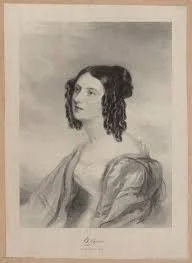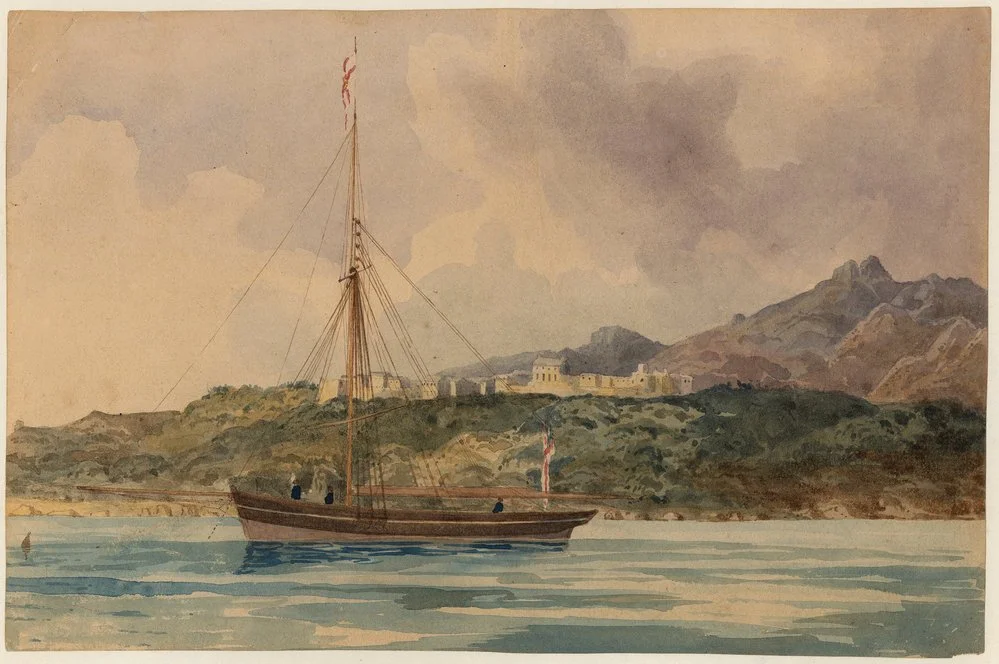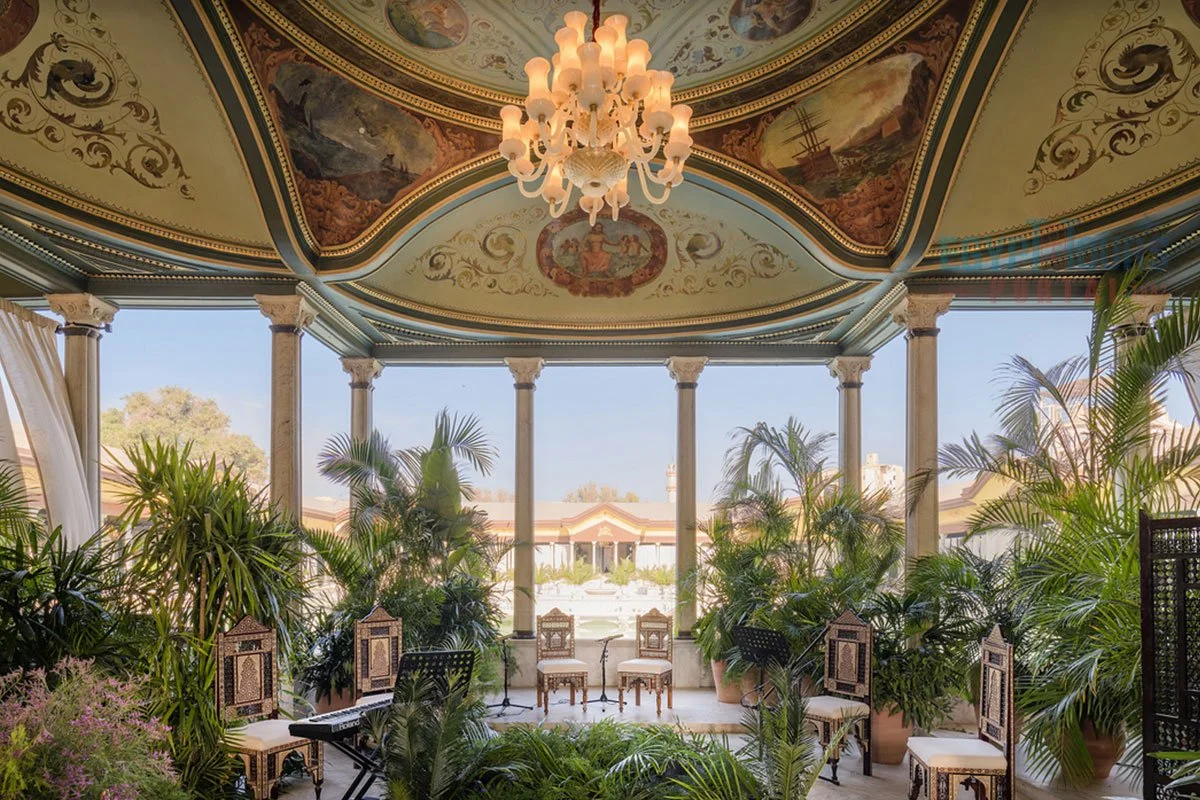Part Six: The Grand Tour
Mary Bennet 1804-1878
Augusta Mary Bennet was born at Goodwood, the Sussex estate of the Dukes of Richmond. She was the natural daughter of the 3rd Duke, Charles Lennox and his ‘housekeeper’ Mrs Mary Blesard Bennet, who was 30 years his junior, a former actress, and possibly a widow. The 1st Duke, Charles’ grandfather, had been the illegitimate son of King Charles II, thus Mary was born into great wealth and a significant position in society despite her illegitimacy. The Duke had married Lady Mary Bruce but their marriage did not produce any issue. Only after Duchess Mary’s death in 1796 did he begin his relationship with Mary Bennet, a noted beauty. The liaison produced three daughters: Elizabeth (d. 1807), Mary and Caroline. When the Duke himself died, also in 1807, his title and estate passed to his nephew, the son of his younger brother George.
The Duke did not forget his mistress and daughters. Mrs Bennet was left a substantial part of his personal holdings, namely his London mansion and the entire estate of Earl’s Court. To each daughter he bequeathed £10,000, worth over a million pounds today. The pretty girls were now heiresses, thus it is no surprise that they grew up to be society darlings.
The girls were raised quietly by their mother at the Dower House in the grounds of Goodwood until they were old enough to be presented at court, probably under the supervision of their Lennox aunts, particularly Sarah Lennox Napier with whom the two sisters resided when ‘in town’. In 1823, the youngest sister, Caroline –considered the most favoured of the two– married Sarah’s own son, her first cousin, Henry Edward Napier, bringing the two families even closer. The Bennet sisters were lively, intelligent and very beautiful, at the forefront of fashion, the very toast of London society.
In 1824, Mary and Caroline met William Light at the studio of the popular portrait painter Miss Charlotte Jones; from then on Mary and William became inseparable. As a close friend of her cousins, the Napier men, it was natural that William should often be in Mary’s company and an affection arose between them. She was 20, he was 38, but age was not necessarily an obstacle to their relationship at the time. She may have been besotted with the dashing older man who had an impressive military record full of adventure and danger, together with the extra frisson of his exotic heritage. The pair exchanged passionate letters in which he claimed he was not worthy of her, being without any fortune or prospects, to which Mary dismissively replied that she cared not if they were ‘as poor as church mice, for love would conquer all.’ Easy for a wealthy heiress to say. They were married in London in October 1824 and soon left for an extended honeymoon, a Grand Tour. It would be three years before they returned home.
After an interval in England in 1827, called back by the deaths of Sarah Napier and Caroline’s two babies, William Light bought a schooner Gulnare – and when the mourning was over, the couple returned to the Mediterranean, now sailing the Adriatic and Aegean Seas in the same rootless fashion until 1830 when they finally put down some roots in Alexandria. Legacy describes these years in some depth.
It is evident that by now the marriage was in trouble, problems which only deepened when Light left Mary alone in Alexandria whilst visiting England in service of the Pasha of Egypt. During this time, Mary met Captain Hugh Bowen at a ball and began a passionate affair that ultimately destroyed her marriage when she discovered she was pregnant. In 1832 Mary and William agreed to separate, which caused a great scandal in London social circles. To avoid the inevitable fallout, Light remained in Egypt, while Mary settled in Genoa at her mother’s villa. Over the next few years she gave birth to two sons, fathered by Bowen, but both given the surname Light for form’s sake.
Although Mary had been cut off by her family on account of her outrageous behaviour, amongst the expatriate community in Italy the lively beauty soon established herself as quite the doyenne of fashion and good taste. Mary’s relationship with Bowen came to an abrupt end in 1835, followed by his complete mental breakdown. Captain Bowen was returned to England where he was committed to a lunatic asylum in London.
Mary seems to have taken a new lover around 1834-5, who may have been the controversial and much older English writer and poet, Walter Savage Landor, whose own marriage coincidentally ended in the same year that Mary gave birth to a daughter Bianca Mary (Blanche) Light, known locally as ‘Landor’s girl’. By now she was living in Florence at the Villa Casina Feroni. Landor and Mary were not together for long, however; in 1836 he returned to England, eventually settling in Brighton. In 1839, Sandor learned Bowen was seriously ill. Whether out of guilt or because they had once been friends, Sandor brought Bowen to his home, where Hugh died in August of that year.
In 1841, now officially a widow since the death of William Light in 1839, Mary married Alfred Lambert to whom she had a son and a daughter. This marriage was also ill fated and the two eventually separated. From then on, there were other affairs, but no further children; Mary lived her life her own way, refusing to conform to society’s rules. She was to remain in Florence for the rest of her life, passing away in 1878 at the grand old age of 74 at her home, Villa Corsi. Like her aunt Sarah Lennox Napier –with whom she shared an independent and wilful spirit– Mary also went blind in her old age.
Caroline and Mary Bennet, 1824
probably by Miss Charlotte Jones
Goodwood Estate, Sussex
[Photo Credit: Wikipedia, Ian Stannard]
An Engraving of Goodwood House 1829
[from ‘Views of the Seats of Noblemen and Gentlemen by J.P Neale et al
The Collection of The Di Camillo Companion Ltd
Caroline Bennet Napier, Florence 1835
Richard James Lane after Seymour Stokes Kirkup lithograph
[Credit: National Gallery Collection]
Capt. Henry Edward Napier (1789-1853)
Artist Unknown
From www.florin.ms: The English Cemetery of Florence
The Gulnare in the Mediterranean c 1830
[Painting by William Light from the State Library of South Australia Collection]
Walter Savage Landor (1775-1864)
[by William Fisher 1839 National Portrait Gallery
Pasha Mehmet Ali (1769-1849)
Mehmet Ali, Wali (governor) of Egypt under the Ottomans was born in Macedonia of Albania ancestry. It is one of the astonishing facts about the Ottoman period that some of its most influential figures over the centuries originated in the western provinces and had been born into other religions, many being Christians. Mehmet Ali was once one such boy.
The army recruited from all the outlying provinces, arriving in villages and conscripting suitable boys who were forcibly taken from their families, converted to Islam with new names, and then offered opportunities for advancement in the ranks of the army, especially the elite Janissary troops. The purpose of this was to ensure that those closest to the emperor had no connections to any of the great families, and thus their careers depended on loyalty to the Sultan. Mehmet made the most of his lot, rising to senior office until ultimately becoming a pasha, the highest order at the Ottoman court. Around 1805, he was appointed Pasha of Egypt.
Egypt, always famed for its wealth, trading importance and its cosmopolitan communities had in recent years suffered from European encroachment. Napoleon had used it as a base for his army and navy, laying siege to the famous port of Alexandria in 1798 and then occupying territories of the interior along the Nile. The British, concerned that Napoleon was aiming to use Egypt and the Gulf as a springboard for an attack on Company territories in India, launched their own campaign , defeating the French at the Battle of the Nile (under Admiral Nelson) and then waging a land campaign, even besieging beleaguered Alexandria in 1801 and wrenching it from French control.
Pasha Mehmet Ali ( also known as Muhammed Ali) ruled Egypt in the aftermath of this tumultuous era, from 1805-48. With the withdrawal of the French, a power vacuum had resulted in internal conflicts which Mehmet Ali dealt with using brutal force, especially against the Mameluks, who had controlled Egypt for 600 years and were attempting to take it out of Ottoman control.
Mehmet Ali virtually wiped out the Mameluk aristocracy and destroyed their troops, restoring Ottoman central authority. But he was not ready to stop there. Introducing a campaign of rebuilding, modernisation, legal reforms and relations with European powers, he began to establish Egypt as a regional power under his direct control; his ambitions were clear. He wished to break with the Ottomans and make himself the Sultan of a new Egypt.
Although ultimately unsuccessful, his notable reforms set down the future for the modern Egyptian state. In the twentieth century, leaders such as Nasser regarded Mehmet Ali as the father of the Egyptian Republic. He remains, a fascinating character, a complex blend of forward thinking, innovation, cruelty and imperial ambition.
Mehmet Ali 1841
by Auguste Coudet [Palace of Versailles collection]
Interview with Mehmet Ali in Alexandria 1839
[Louis Haghe after David Roberts Credit: Jan Arkesteijn, Wikipedia]
A pavilion in the Nymphaeum Shoubra Palace Cairo
Visited by William and Mary Light Legacy Ch. 33
[Credit: Egypt Tours Portal]









